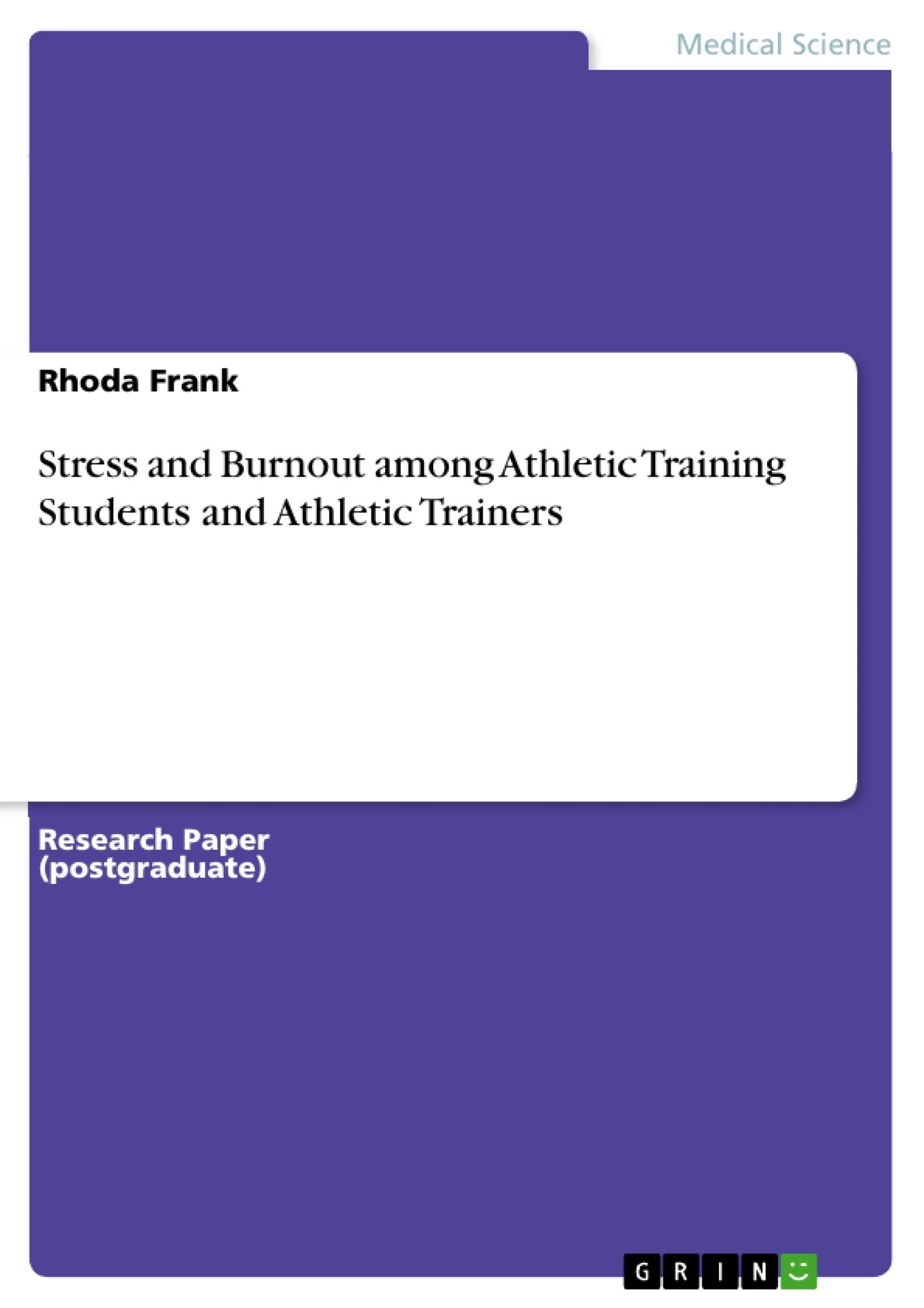This study aims to determine the causes of stress and burnout among athletic training students and athletic trainers and how these problems affect their professional careers. Besides, the study seeks to establish the level of burnout among athletic training students. Additionally, the study aims to establish the solution for the issues identified and recommends strategies that athletic training programs should implement to mitigate stress and burnout.
Role strain, work-family conflict, and professional socialization are the leading cause of stress and burnout among athletic training students. Task incongruence, role conflict, ambiguity, overload, and incompetency were the identified aspects of strain in ATs. The ambiguity in the athletic training profession is connected to insufficient specificity, while role conflict occurs in a situation where an individual is assigned to multiple roles at the same time. In essence, an individual's values and beliefs may not be compatible with professional job demands, causing role incongruence (the situation where description does not align with an individual's personality). Nineteen articles deeply examine the effect of role strain in athletic training students' profession. Work-family conflict is the disturbance emanating from the profession's family responsibilities, impacting their professional accomplishment. Fourteen researchers examined this problem extensively in the reviewed research articles, and it was determined to be a potential cause of burnout among athletic training students. High travel demands and long working hours are the two causes of work-family conflicts identified in the study. Besides, delayed or rescheduled games were determined to contribute to work-family conflict among the athletic trainers. The study found professional socialization and burnout among athletic training students closely related. Role revolution, gaining stability, formal preparation, envisioning the role, and organizational entry are the five essential phases of professional specialization in sports medicine.
Inhaltsverzeichnis (Table of Contents)
- Abstract
- 1. INTRODUCTION
- Background
- Statement of the Problem
- Purpose of the Study
- Research Objectives
- Research Questions
- Significance of the Study
- Definition of Terms
- Methods
- Literature Search
- Inclusion and Exclusion Criteria
- Data Collection
- 2. LITERATURE REVIEW
- Burnout
- Generalized Stress
- The Transactional Model of Stress and Coping
- Causes of Stress and Burnouts among Athletic Training Students
- Role Strain
- Work-Family and Work-Life Conflict
- Professional Socialization
- Personality Responses to Stress
- Retention Rates
- Clinical Experiences/ Course Loads
- Synthesis and Key Findings
- 3. RECOMMENDATIONS AND CONCLUSION
- Implications for Practice
- Strengths and Limitations of this Study
- Suggestions for Future Research
- References
Zielsetzung und Themenschwerpunkte (Objectives and Key Themes)
This research aims to identify the causes of stress and burnout among athletic training students and athletic trainers, explore their impact on professional careers, and establish the prevalence of burnout among students. The study further seeks to propose solutions and recommend strategies for athletic training programs to mitigate these issues.
- Stress and burnout among athletic training students and trainers
- Causes of stress and burnout, including role strain, work-family conflict, and professional socialization
- Impact of stress and burnout on professional careers
- Prevalence of burnout among athletic training students
- Mitigation strategies for athletic training programs to address stress and burnout
Zusammenfassung der Kapitel (Chapter Summaries)
The first chapter of the study introduces the background, purpose, and objectives of the research. It outlines the problem of stress and burnout among athletic training students, highlighting the key factors contributing to these issues. The chapter also delves into the methods used in the study, including the literature search process, inclusion and exclusion criteria, and data collection methods.
Chapter two provides a comprehensive review of the literature on stress and burnout. It examines various aspects, including definitions, models, and causes, with specific focus on role strain, work-family conflict, and professional socialization. The chapter further analyzes the impact of these factors on athletic training students' professional careers and academic performance.
The third chapter focuses on the recommendations and conclusions drawn from the study. It explores the implications of the findings for practice, highlighting the need for supportive environments and effective strategies to mitigate stress and burnout among athletic training students. The chapter also addresses the strengths and limitations of the study and proposes areas for future research.
Schlüsselwörter (Keywords)
This study focuses on the critical areas of stress and burnout among athletic training students and athletic trainers. The research investigates key factors such as role strain, work-family conflict, and professional socialization, exploring their impact on academic performance, professional careers, and student retention rates. The study also explores the potential of robust support systems, effective leadership, and coping mechanisms to address these issues and foster a more conducive learning environment.
- Quote paper
- Rhoda Frank (Author), 2023, Stress and Burnout among Athletic Training Students and Athletic Trainers, Munich, GRIN Verlag, https://www.grin.com/document/1364323



